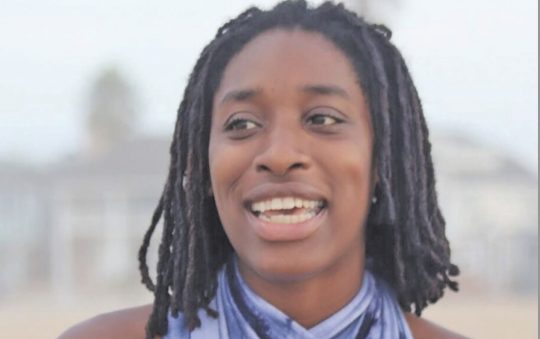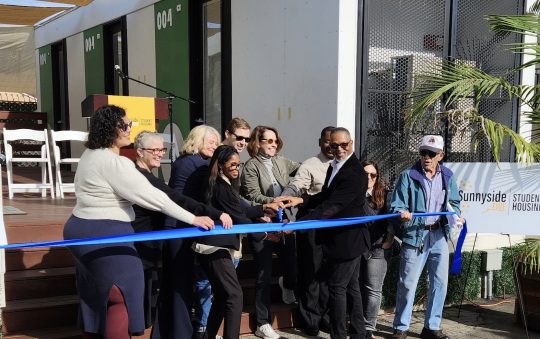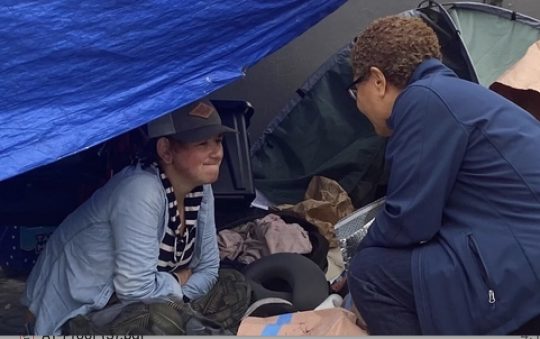
Homelessness is growing despite the fact that Los Angeles officials are housing more people than ever, said Councilman Marqueece Harris Dawson last week as he joined other politicians, residents and advocates at Holman United Methodist Church, to discuss the issue of youth homelessness. The group also gathered to watch “Lost in America”, a documentary by Rotimi Rainwater, formerly a homeless young adult, addressing the growing issue across the country. Those who attended were hoping to come up with possible solutions, not just for Los Angeles, though this city was their focus, but for the entire United States.
“We have far more homeless young people than we’ve had in the past,” said Harris Dawson.
“We need to make sure that organizations that take young people in, give them lots of support. Some people think the solution is to take a young homeless person, find them an apartment and give them a key. I know for myself when I was 18, that wouldn’t have been a good situation …”
According to the National Network for Youth, instability in the home is one of the major contributors for homelessness among young adults 18-24 in the United States.
Common family experiences include child abuse and/or neglect, domestic violence, parental substance use, and family conflict, say officials from the organization.
“Ninety percent of youth accessing youth shelters for minors, through the federally funded Basic Center programs, state that they experience difficulty at home, such as constant fighting or screaming. Parental issues and ensuing conflict related to a youth’s sexual orientation, gender identity, or gender expression are other factors in youth becoming homeless. Youth are kicked out of their home or leave home because it is too dangerous for them to stay…”
One study, they said, found that twenty-five percent of lesbian, gay, bisexual, and transgender (LGBT) youth reported family rejection as the reason for their homelessness. Another study found that over one-third of youth who were either in the care of social services or who were homeless had been physically assaulted in their homes, upon coming out to their family.
“There is a disproportionate number of lesbian, gay, bisexual, and transgender (LGBT) youth among the homeless youth population,” said NN4Y officials via their website nn4youth.org.
“Multiple studies have shown that up to 40% of homeless youth are LGBT. Our society has changed dramatically in the acceptance of
LGBT persons, but some families and community members have been unable to accept these realities. Family rejection for being who you are is enormously detrimental psychologically, and evidence suggests that these young people have increased depression and a sense of futility that leads to risk-taking and even self-destructive behaviors. At the same time, LGBT homeless youth are targeted for even more exploitation on the streets than their straight homeless peers.”
Such was the case for one African American young adult in the film, who described his family as deeply religious and unaccepting of his homosexuality. They told him the devil had taken over his life and that was the reason for his homelessness. If he would just “come back to God”, he could go home, he explained.
Here in Los Angeles, Tori Bailey, a representative for Homelessness and Public Safety for the United Neighborhoods, Neighborhood Council, said that lack of resources to obtain affordable housing is a major obstacle.
“A lot of the jobs [here] are not offering livable wages,” she said.
She also said that a lot of empty buildings in the city could be used for transitional housing to reduce incid ences of homelessness in L.A. County.
“There are many empty spaces. Why,” Bailey asked.
“That’s just one of many examples of buildings that can be utilized at least for transitional housing. Get them off the street. Everyone is not on drugs and alcohol…”
For his part, Rainwater says the main thing homeless youth need is love and understanding. Like Bailey, he encouraged people not to be judgemental and assume that all homeless people are on drugs or alcohol.
“I think that was what was really behind this film. The greatest thing that a child needs is love, love from a father and mother (especially),” he said.
“If they don’t have that they may end up on the streets.”






